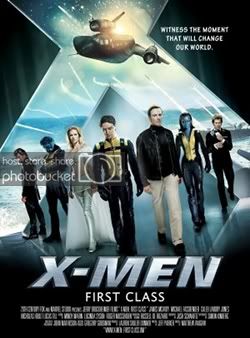Review: The Tree of Life
After two viewings, I can now confidently analyze what I’ve seen from Terrence Malick’s fifth, and most abstract film to date. Those familiar with the director and his reputation for being both reclusive and secretive know that each film of his is not so much a movie, as it is an event. After three years of editing the film, and after it received the top prize at the Cannes film festival, The Tree of Life has served as a lighting rod among critics, bloggers, and movie-goers. It’s only June, and I believe this will be the most divisive film of not only this year, but possibly next year as well.
The film is both grandiose and intimate, as it juxtaposes the evolution of Earth and our species with a conservative family living in 1950s Texas. Malick himself grew up in Texas, and it’s evident that what we’ll come to see throughout the film is more than likely a rumination on his own childhood. Brad Pitt and Jessica Chastain play Mr. and Mrs. O’Brien, the film starts with them being informed of the death of one of their three sons. Chastain brings a painful presence to these early scenes as she woefully grieves and pleads to the heavens for answers. We cut to the present where one of the boys, now middle-aged and played by Sean Penn recalls memories of the brother that he lost. Penn’s character Jack is now a successful architect living in Houston, a city framed in steel and glass, totally void of any warmth and compassion. In a whisper, Jack proclaims that “the world has gone to the dogs,” it’s everyone man for himself. Penn’s early appearance teases us into thinking he’ll be an integral part of the film, but most of his character’s screen-time, and the film, is devoted to when Jack was a young boy living under the harsh roof of his father.
One of the film’s central themes tells us that there are two paths in life in which we may follow. The way of nature, and the way of grace. Nature is exuded by the patriarch Mr. O’Brien and his “survival of the fittest” mentality. His character portrayed by Pitt was an ex-Naval officer, turned failed musician who had plans to succeed in life, but never made it out ahead. His near-dictatorship style of parenting is looked down upon by his loving and almost angelic wife. Her views are molded in the notion that man should love all things equally. The three sons, Jack, R.L., and Steve all find themselves conflicted as to which is the correct path to follow.
Even though the film contains the slightest semblance of traditional narrative, it’s rooted in such eye-opening and jaw-dropping beauty. Major props go out to lenser Emmanuel Lubezki and production designer Jack Fisk for their once again stunning efforts. Malick’s original way of telling a story may not be the most compelling to those who aren’t familiar with his work, but one cannot deny the stunning sensibility and imagination put forth by Malick and his crew. It’s easily the best looking film of the year, one that captures the essence of visual confidence and intuition. Audiences may find themselves being tested early on, as an 18 minute Kubrick-esque depiction of the origins of space, time, and life on planet-Earth invade the picture.
The film portrays childhood and growing up in a painfully realistic nature. The boys live on a street where front doors are kept unlocked and days have endless possibilities. No one has portrayed the mysterious plight and perspective of children this well since David Gordon Green did in George Washington. We mostly follow Jack’s point of view, and his resentment towards his strict father, whose own morals and actions are deemed forgivable by the person that Jack’s dad turns out to be by the end of the film. Also, it’s Pitt’s layered and conflicted performance that works here as well, playing a man that has offered everything of himself, and has received nothing in return. I didn’t experience the same childhood as the boys in the film, but there is so much here to identify with as Malick interjects even the shortest scenes in which the boys experience or are exposed to something that is foreign to them.
The Tree of Life is much more dense and cryptic than I’m making it out to be, the beauty of the film resides in what the viewer makes of it. Malick is subjecting us to his own views on creation, family, life, and death with such a strong conviction that one could make the mistake in thinking that this film was delivered straight from the heavens and into the cinema, truly a religious experience. Tonally, it’s different than any other Malick work because it’s shrouded in a sort of non-decipherable code. We’re supposed to make our own connections with the material, and answer life’s grandest mysteries on our own. In comparison with the rest of Malick’s filmography, Tree of Life contains the director’s most mysterious imagery. Take for instance a shot of Chastain literally floating in midair outside of the house, or a scene in an attic of a giant thin man watching over a toddler on a bicycle.
It’s ultimately an ode to memory and a celebration of life. Are man and woman significant entities in the grand scheme of things, is there a certain path in life that will bring us peace? Only by the end of the film does Malick release the vice-grip of sadness and loss that was so palpable during the 1950s segment. The coda and much discussed finale of the film takes place on a beach where Penn’s character is surrounded by numerous enlightened wanderers, including his own family and his younger self. I think Malick is saying that life is a collective experience and that all journeys and destinations are a communal, much like the cinema, a place where strangers gather in the dark to experience greatness, something that this film aspires to be, and something that it easily surpasses.















 Review: The Tree of Life
Review: The Tree of Life Review: The Tree of Life
Review: The Tree of Life Tarkovsky: Zerkalo
Tarkovsky: Zerkalo Review: Frontier(s)
Review: Frontier(s) Review: The Tree of Life
Review: The Tree of Life




















































